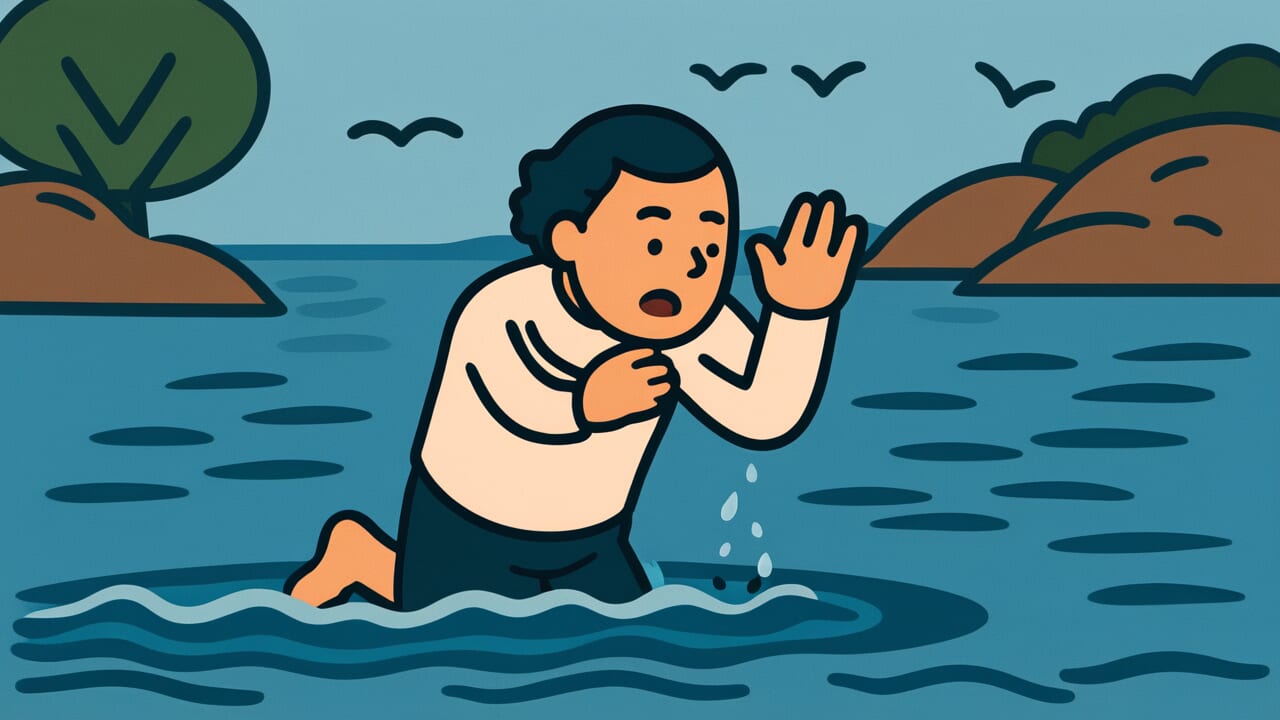How to Read “When you cry, cry and cross”
Naku toki wa naite watare
Meaning of “When you cry, cry and cross”
“When you cry, cry and cross” teaches us to accept our pain when times are hard, but still move forward boldly. This proverb conveys a life truth: when facing difficult situations, you don’t need to force yourself to be strong, but you also can’t just stop moving.
When things are so hard we want to cry, we tend to freeze in place. But this proverb doesn’t deny tears. Instead, it teaches the importance of acknowledging our emotions while still moving forward.
It’s not about looking away from pain or being swallowed by it. It’s about walking alongside your pain.
People still use this saying today during life’s turning points and difficult decisions. Job changes, breakups, new challenges—in unavoidable painful moments, people encourage each other by saying “When you cry, cry and cross.”
The essence of this proverb is having the courage to act without suppressing your emotions.
Origin and Etymology
There are no clear records of when this proverb first appeared in literature. However, the structure of the phrase itself is quite fascinating.
“When you cry, cry and cross” likely imagines a scene of crossing a river. In ancient Japan, crossing rivers was one of the greatest challenges of travel.
Before bridges existed, people had to find shallow spots to wade across or use ferry boats. Crossing a swollen river could be a life-or-death situation.
The core of this expression lies in “cross even while crying.” When you face a river and fear makes you want to cry, standing still won’t get you anywhere.
You don’t need to hold back your tears. Rather, take that first step even if you’re crying. This is the powerful message contained in these words.
Japanese culture often values suppressing emotions as a virtue. Yet this proverb doesn’t deny emotional expression.
It teaches the importance of taking action while acknowledging your pain. This is what makes the proverb uniquely valuable.
It’s wisdom rooted in our ancestors’ lived experience, comparing life’s difficulties to crossing a river.
Usage Examples
- Heartbreak is painful, but they say when you cry, cry and cross, so I’ll jump into a new environment
- I’m anxious about quitting my job to care for my parents, but I made the decision with the spirit of when you cry, cry and cross
Universal Wisdom
Humans are beings with both emotions and reason. This proverb has been passed down for hundreds of years because it deeply understands that people cannot ignore their emotions.
Many teachings say “Don’t cry, be strong” and demand emotional control. But in real life, there are moments when tears simply won’t stop.
Parting with loved ones, shattered dreams, unavoidable choices. In such times, denying emotions makes people suffer doubly.
They blame themselves for crying and feel ashamed of their weakness.
“When you cry, cry and cross” sees through this human nature. Acknowledging emotions and taking action don’t contradict each other.
In fact, by accepting emotions, people gain true strength.
Our ancestors knew this. They knew life has rivers that must be crossed. And they knew crying before those rivers is natural for humans.
What matters is the courage to take a step forward even while crying. Not perfect strength, but the courage to move forward while imperfect—this is true human strength.
This is what the proverb teaches us.
When AI Hears This
Suppressing emotions has the same structure as trapping steam in a pressure vessel. In physics, energy doesn’t disappear—it only changes form.
This means the emotional energy of sadness doesn’t vanish when you hold back tears. It continues accumulating inside your body in different forms.
What’s interesting is that this accumulation has a limit. Every pressure vessel has a maximum pressure rating. Beyond that, it ruptures at unpredictable locations.
Humans are the same. When you keep suppressing emotions, you suddenly explode in completely unrelated situations or develop physical symptoms.
Psychological research shows that suppressed emotional energy releases with three to five times the destructive power when it finally comes out.
On the other hand, crying functions as a controlled pressure relief valve. Factory steam systems have safety valves that gradually release steam to prevent dangerous pressure buildup.
By releasing emotional energy in small amounts through crying, the entire system’s pressure stays in the safe range.
The essence of this proverb is that immediate emotional release is actually the most efficient energy management. Endurance isn’t energy-saving—it’s dangerous accumulation toward a future explosion.
Lessons for Today
Modern society overflows with messages saying “Be positive” and “Be strong.” Social media displays only success stories. There’s an atmosphere where even complaining feels wrong.
But this proverb shows us a different path.
If you’re in a difficult situation right now, you don’t need to force a smile. If you want to cry, you can cry.
What matters is taking a step forward while carrying those emotions. You don’t need to wait until everything is perfectly prepared.
If you wait until your heart is completely healed, you might miss important life opportunities.
Job changes, moves, new challenges—life’s turning points always bring anxiety. But nobody feels no anxiety.
Even successful people may have crossed while crying.
This proverb is your permission slip to move forward as your imperfect self. Experience your emotions and still keep walking.
That’s what true strength looks like, the proverb teaches us.



Comments